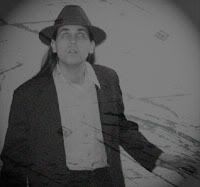The Victorian Obsession with Phrenology
As we were all so constantly reminded in school, phrenology was a “science” wherein men with strong, vise-like fingers could determine a person's personality, hair color, and favored sandwich garnish(es) from the shape, size, and general malleability of the skull. Models were often employed, cast in plaster, marble, or phrenolium (Queen Victoria's phrenolium-carved head model still stands outside Westminster, frowning gently upon the populace and declaring to the masses that the well-loved queen loved worcestershire very well indeed). Famously, Edgar Spinthrift-Smythe, a phrenologist hailing from the far-off land of Cambodia, was the first to understand Pittsburgh's love affair with Steel, by molesting a to-scale model of the city cast in bronze and porcelain.
However, the Victorian obsession with this artful science, while widely recognized as palpable and wide-eyed, is poorly understood at best. Some scholars blame the schools (thus setting up a convoluted system of wormholes and accrediting services that, ultimately, places the blame on the scholars). This is foolish, of course, as it is well documented that the advance of astrology from its blocky, imposing fortess in the wastes of Ohio, bedecked in its gaiety and hoisting grim war-spears, wiped phrenology and the Victorian love of same from the minds of common man.
Franz Joseph Gall, a German born under an exploding star, fell to earth in the pastoral nicety of Germany. It was this man, found mewling and squinting into the depths of his departed space, that invented the science of headology. His publicist, an orphan from the hidden planet tiny-Giganticus, changed the name to phrenology in all the pamphlets advocating the study of skull shape. Gall learned of this three years after his death, and the squalling frightened Hitler's mother, leading to the famous episode of in the bakery, which I need not go into here.
The Victorians lacked a discipline relating to the shapes of heads. Dickens was the most vocal critic of his contemporaries, haranguing them from his open bedroom window on several occasions. One of these times he might have said something about phrenology, we're not really sure, this kid was being really loud across the street.
The Victorians, as established earlier, lacked a head-shape discipline. Phrenology filled this longing in the heart of the average Victorian, displacing the peculiar fetish for ankle-innuendo jokes around the office crumpet dispenser. The advent of Gall's phrenology was a godsend. As the story of Gall's space-birth circulated through the nicer, better-dusted drawing rooms of Victorian society, this feeling of “godsend” grew, until the London post office received a note from God saying he had nothing to do with it. This note was never read, and burned in the Great Fire.
Of course, as is true with all obsessions, eventually phrenology grew to outstanding proportions, dwarfing the town of Cardiff. When its growth was complete, the obsession ripped the Cardiff church apart and wore the steeple as a jaunty hat. It rampaged across the English countryside, frightening skirted women on trains with its tugboat-sized feet and uncovered lower legs (being young, it still dressed in the kneepants that were de rigeur).
Queen Victoria's dead husband, Albert, rose from his stately tomb to do battle with the obsession. It has been reported by men that were present and mostly sober that the Queen herself pulled the lever forcing Albert into the hellish necrotic animation that was his doom. She is quoted as muttering, “think of England” as she loosed her husband, proving she had an excellent sense of humor as well as a sense of duty.
Albert flew to the obsession's location at the time: the Sherwood Forest. They did battle in the skies of England. The obsession had lasers and a mighty grip on the forces of electricity, but Albert could command the creatures of the skies and seas by reciting poetry written about him post-mortem. Birds flew into the obsession's mouth, tearing at its throat and smothering the air from its lungs. Fish leapt from the sea, arced beautifully in the gleaming sun, and fell to the earth to suffocate slowly, save the one plesiosaur that landed safely in a Scottish lake, never to be seen again. Albert's mighty fist crushed the obsession's skull, ending its stranglehold on Victorian society, allowing them to in turn become obsessed with humorous hats.

